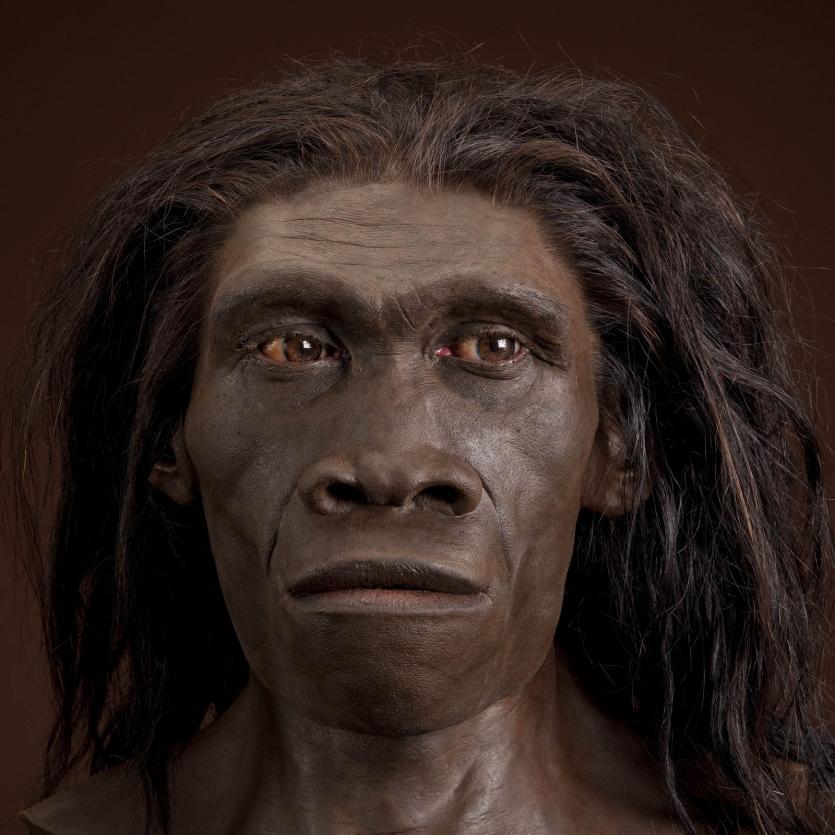(单词翻译:单击)
Although erectus had been known about for almost a century it was known only from scattered fragments—not enough to come even close to making one full skeleton. So it wasn't until an extraordinary discovery in Africa in the 1980s that its importance—or, at the very least, possible importance—as a precursor species for modern humans was fully appreciated. The remote valley of Lake Turkana (formerly Lake Rudolf) in Kenya is now one of the world's most productive sites for early human remains, but for a very long time no one had thought to look there. It was only because Richard Leakey was on a flight that was diverted over the valley that he realized it might be more promising than had been thought. A team was dispatched to investigate, but at first found nothing. Then late one afternoon Kamoya Kimeu, Leakey's most renowned fossil hunter, found a small piece of hominid brow on a hill well away from the lake. Such a site was unlikely to yield much, but they dug anyway out of respect for Kimeu's instincts and to their astonishment found a nearly complete Homo erectus skeleton. It was from a boy aged between about nine and twelve who had died 1.54 million years ago. The skeleton had "an entirely modern body structure," says Tattersall, in a way that was without precedent. The Turkana boy was "very emphatically one of us."
尽管直立人被发现已近一个世纪之久,但人们对他的了解仍然只能建立在零零碎碎的化石上——甚至还拼不成一副完整的骸骨。直到20世纪80年代,在非洲的一次非同寻常的发现以后,其作为现代人的先驱者的重要性——或者至少说,其可能具有的重要性——才得以被完全认识。偏僻的肯尼亚图尔卡纳湖区(以前的鲁道夫湖区)现在已是世界上发现早期人类化石最多的地区之一,但是在以前相当长一段时期内,没有任何人想到去那里寻找化石:仅仅是因为有一次飞机偏离航线而飞过了湖区上空,使得理查德·利基意识到这可能是一个比原先想像的更有收获的地方。一个考察队被派遣到了这一地区,可是一开始什么也没有找到。接着,有一天下午晚些时候,利基手下最著名的化石发发掘卡莫亚·基穆在离开湖区一段距离的一座小山上发现了一小片人科动物的眉脊化石。这样一个地方原本不大可能有大的收获,可是出于对基穆直觉的尊重,大家还是开挖了起来。令人吃惊的是,他们居然挖掘出一副几乎完整无缺的直立人骸骨。这是一个年龄大约在9-12岁的男孩骸骨,死于154万年前。塔特萨尔认为,这副骸骨具备了“所有现代人类的身体结构”。在某种意义上,这是史无前例的发现。“图尔卡纳男孩显然是我们中的一员”。

Also found at Lake Turkana by Kimeu was KNM-ER 1808, a female 1.7 million years old, which gave scientists their first clue that Homo erectus was more interesting and complex than previously thought. The woman's bones were deformed and covered in coarse growths, the result of an agonizing condition called hypervitaminosis A, which can come only from eating the liver of a carnivore. This told us first of all that Homo erectus was eating meat. Even more surprising was that the amount of growth showed that she had lived weeks or even months with the disease. Someone had looked after her. It was the first sign of tenderness in hominid evolution.
基穆在图尔卡纳湖还发现了编号为KNM - ER1800的一副170万年前的女性骸骨。它第一次给科学家提供了有关直立人的线索,使得他们认识到直立人比以前想像的要有趣和复杂得多。这个女人的骨骼有些变形,上面布满斑斑点点,表明她得过一种被称为维生素A过多症的慢性病。这种病只有吃食肉动物的肝脏才会得。这第一次向我们表明直立人是肉食人属。更令人惊叹的是,她骨骼上的斑点数量表明,她患病已达几周甚至几个月而没有死去。有人曾经照料过她。这是人科动物进化过程中所发现的温柔之情的第一个迹象。


